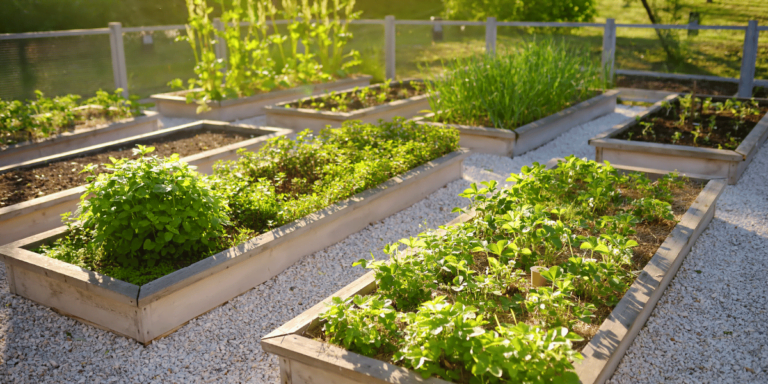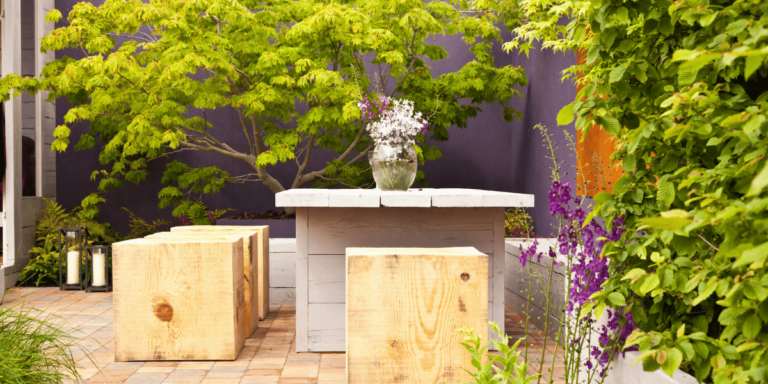Introduction
The indoor plant known as Rabbit’s Ear, or scientifically as oxalis planting, is a delightful addition to any plant collection. Its vibrant, butterfly-like leaves and pretty blooms, ranging from white to purple, lend a touch of whimsy to indoor settings. The following comprehensive review touches on various aspects of caring for the Rabbit’s Ear, ensuring it not only survives but thrives in your care.
Rabbit’s Ear (Oxalis) Indoor Plant Details
| Key Specification | Details |
|---|---|
| Common Names | Rabbit’s Ear, False Shamrock, Wood Sorrel |
| Botanical Name | Oxalis |
| Family | Oxalidaceae |
| Plant Type | Herbaceous perennial |
| Mature Size | Varies by species but typically 6 to 12 inches in height |
| Sun Exposure | Prefers bright, indirect light but can tolerate partial shade |
| Soil Type | Well-draining potting mix, preferably mixed with some organic compost or peat |
| Soil pH | Slightly acidic to neutral (6.0 to 7.5) |
| Bloom Time | Most species bloom in spring and summer, but some can bloom intermittently throughout the year |
| Flower Color | Ranges from white, pink, yellow, to purple depending on the species |
| Hardiness Zones | Typically 6-9, but this can vary with species and whether the plant is grown indoors or outdoors |
| Native Area | Oxalis species are found globally, but many popular varieties for cultivation originate from South America |
| Benefit | Apart from their ornamental value, some Oxalis species are used in folk medicine and as culinary ingredients |
When considering the Rabbit’s Ear for your indoor space, these specifications provide an overview of the care and environment best suited for its thriving growth. From understanding its natural habitat to the aesthetic appeal it brings to indoor settings, the table above offers a concise guide to ensure your Oxalis not only survives but flourishes.
Plant Care
Oxalis, in its various forms, is known for its resilience. This unique plant, with its clover-like leaves, exhibits a fascinating dance—opening its leaves in light and closing them in darkness. As with many plants, understanding its native habitat can guide our care techniques. It thrives in various parts of South America, where the conditions can widely vary. Here’s a deeper dive into the specific care needs for the Rabbit’s Ear.
Light
One of the significant aspects of Oxalis care is light. These plants are quite adaptable but prefer bright, indirect light for optimal growth. If exposed to direct sunlight, especially during hot afternoons, the leaves might scorch. However, if they don’t receive enough light, they may become leggy as they stretch towards the light source. Rotating the plant occasionally ensures that all parts of the plant receive an even amount of light.
Soil
The Rabbit’s Ear isn’t too fussy about its soil, but it does enjoy a well-draining mix. A potting mix made for cacti or succulents, combined with some organic compost or peat, usually does the trick. Ensuring the plant doesn’t sit in water is crucial—its bulbs can rot in overly damp conditions.
Water
Watering this plant is a balancing act. The Rabbit’s Ear prefers its soil to be moist but not wet. Overwatering can lead to bulb rot, while underwatering can cause the plant to go dormant. A good rule of thumb is to water when the top inch of soil feels dry to the touch. It’s also essential to ensure that the pot has adequate drainage to prevent stagnant water.
Temperature and Humidity
Oxalis plants are relatively flexible when it comes to temperature but prefer a range between 60-75°F (15-24°C). They can tolerate slightly cooler temperatures but avoid exposing them to anything below 50°F (10°C). In terms of humidity, Rabbit’s Ear doesn’t have any specific requirements. However, if the air is exceptionally dry, consider misting the plant or placing it on a humidity tray.
Fertilizer
While the Rabbit’s Ear is not particularly demanding in terms of feeding, a balanced, water-soluble fertilizer applied every 4-6 weeks during its growing season (spring and summer) can boost its growth and flower production. Always follow the manufacturer’s recommendations and avoid over-fertilizing.
Pruning
Pruning isn’t always necessary but can be beneficial. If you notice any leggy growth or dead leaves, trimming them back can encourage a bushier, more robust plant. Additionally, cutting off spent flowers can promote further blooming.
Overwintering
If your Oxalis starts to drop leaves or appears to be dying back in the winter, don’t fret! This is a natural dormancy period. Reduce watering during this time and allow the plant to rest. Once spring arrives, you’ll notice fresh growth.
Propagating Plant
Oxalis can be propagated through its bulbs. Gently unearth a healthy bulb, ensuring it’s free from rot. Plant it in a new pot filled with appropriate soil, water lightly, and wait for the magic to happen! In a few weeks, you should notice new growth.
Types of Plant
The genus Oxalis encompasses over 800 species, each with its unique characteristics, but for the purpose of this review, let’s highlight a few popular varieties:
- Oxalis triangularis: Recognized for its purple leaves, it’s a popular houseplant variant.
- Oxalis deppei ‘Iron Cross’: Known for its unique green leaves with dark purple centers.
- Oxalis stricta (Yellow Wood Sorrel): As the name suggests, this type boasts bright yellow flowers.
- Oxalis acetosella (Wood Sorrel): Native to Europe and Asia, it has delicate white flowers with hints of lavender.
Common Pests & Plant Diseases with Solutions
While the Rabbit’s Ear is resilient, it’s not entirely immune to pests and diseases. Here are some common threats and solutions:
- Aphids: These tiny pests can be found on the undersides of leaves. A strong stream of water can dislodge them, or you can use insecticidal soap.
- Spider Mites: Noted for the fine webbing they produce. Increase humidity and consider using neem oil as a natural solution.
- Fungal Diseases: Overwatering can cause fungal problems. Ensure your plant has well-draining soil and avoid letting it sit in water.
- Bulb Rot: Often caused by waterlogged soil. If you notice this, it might be time to repot your plant and replace the compromised soil.
How to Get Plant to Bloom
Getting your Oxalis to bloom involves some strategic care steps:
- Light: Ensure the plant is receiving ample bright, indirect light.
- Fertilizer: Use a balanced, water-soluble fertilizer during the growing season to encourage flowering.
- Rest Period: Oxalis sometimes needs a dormancy period in the cooler months. Reduce watering and let it rest. Once it’s refreshed, it’ll be more likely to bloom come spring.
- Pruning: Remove spent blooms to encourage more flowering.
Common Problems With Plant
The Rabbit’s Ear, like other houseplants, may display signs of distress. Here are some common issues:
- Leaf Drop: This can be a sign that the plant is entering its dormancy phase, especially if it occurs during the colder months. However, if this happens during its growing season, it might be due to over or underwatering.
- Leggy Growth: Indicates the plant is reaching for light. Move it to a brighter spot or rotate the pot for even light distribution.
- Yellowing Leaves: Often a sign of overwatering. Ensure you’re allowing the top layer of soil to dry out between waterings.
- Leaves Not Opening/Closing: If your Oxalis isn’t displaying its typical light-sensitive behavior, it may be stressed. Check for pest issues, ensure it’s receiving adequate light, and inspect the roots for rot.
Conclusion: Reveling in the World of Rabbit’s Ear oxalis planting
As we journey through the unique universe of Oxalis, it’s evident that its beauty, resilience, and interactive nature set it apart from other houseplants. With its clover-like leaves that dance with light and shadows and its sporadic blooms that color our lives, the Rabbit’s Ear remains a plant lover’s favorite. By understanding its specific needs and potential issues, we pave the way for a lasting, harmonious relationship with this enchanting plant.
Quickly Declining
Although Oxalis is relatively hardy, certain factors can lead to rapid decline. Overwatering, excessive sunlight, or pests can negatively impact the plant. Always monitor your plant’s condition and adjust care routines if you notice any signs of distress.
Reflective Thoughts on the Rabbit’s Ear oxalis planting
The journey with the Rabbit’s Ear plant, from understanding its care needs to watching it bloom, can be incredibly rewarding. Its dance in the light and shade, coupled with its sporadic blooms, adds an element of surprise and beauty to any indoor setting. As with all plants, a bit of attention and love can go a long way in nurturing this delightful plant.
Frequently Asked Questions
Decode the magic of gardens with our guide to Landscaping Styles Frequently Asked Questions.
- Yes, Oxalis contains oxalic acid, which can be toxic if ingested in large amounts. It’s always best to keep it out of reach from pets.
- With proper care, Rabbit’s Ear can bloom multiple times throughout the year, especially during spring and summer.
- The Rabbit’s Ear naturally closes its leaves in the absence of light or during the nighttime. If it’s doing this excessively during the day, it might be an indication that it needs more light.
- Yes, in suitable climates, the Oxalis can be grown outdoors. Ensure it’s planted in well-draining soil and receives the right amount of light.













